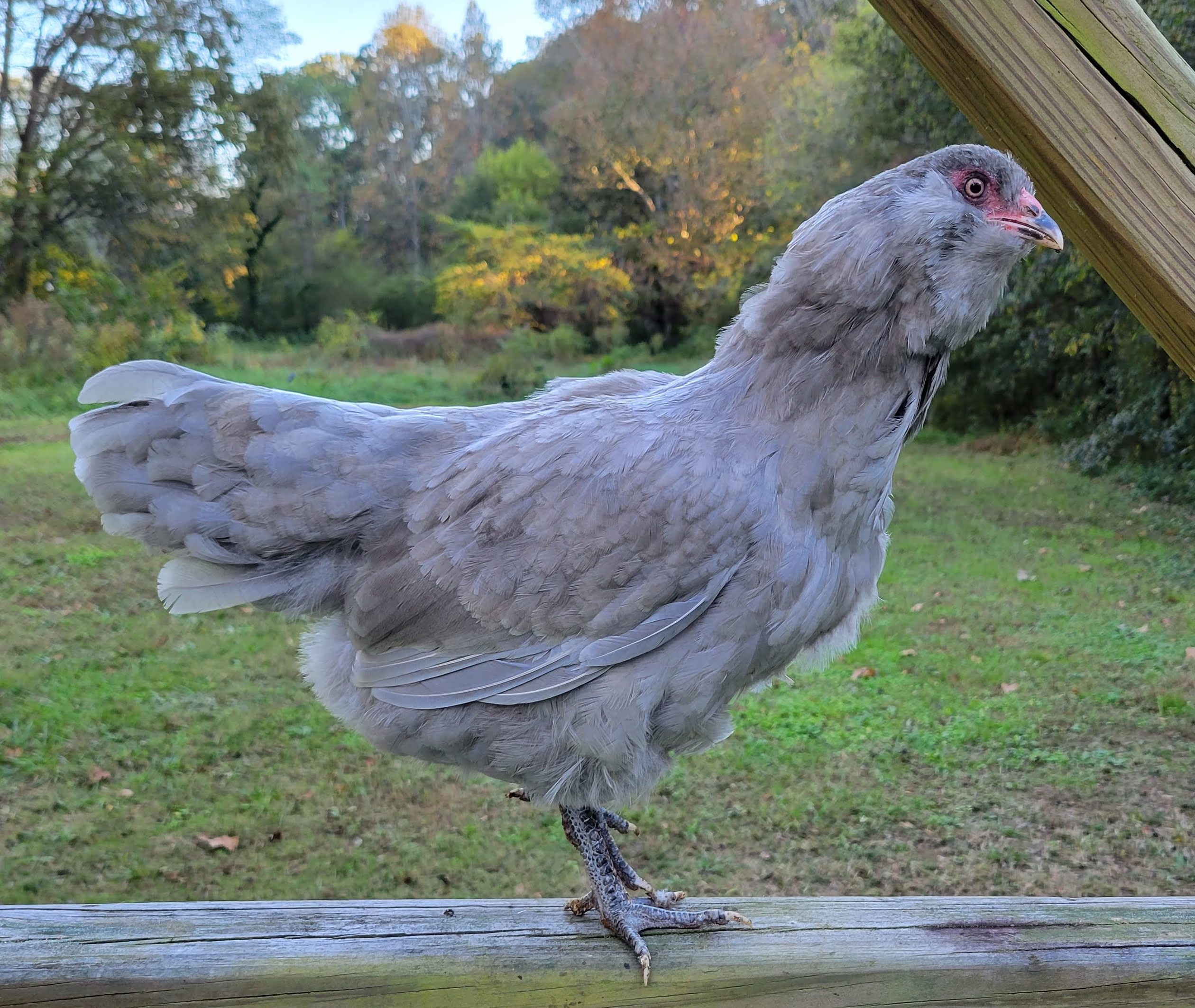Lavender Ameraucana Rooster Vs. Hen: Key Differences!
Lavender Ameraucana roosters are larger and more colorful than hens, featuring striking plumage and a distinctive crow. On the other hand, Hens are generally smaller and known for their egg-laying capabilities.
The Lavender Ameraucana is a unique breed celebrated for its beauty and friendly nature. Originating from the Ameraucana lineage, these birds are known for their striking lavender feathers and blue eggs. Roosters are often more vocal and display dominant behaviors, while hens are calmer and more nurturing.
Their easy nature makes them suitable for families and backyard farms. Knowing the difference between roosters and hens goes a long way in choosing birds that compose your flock for the balance and harmony of the environment to be maintained.
Lavender Ameraucana Chickens

Credit: thepasturefarms.com
Lavender Ameraucana chickens are known for their beautiful color. They originated in the United States. This breed was developed from the Ameraucana and other breeds. Their unique lavender plumage makes them stand out.
Many chicken lovers appreciate their friendly nature. Lavender Ameraucanas lay blue eggs, which is a rare trait. These chickens are hardy and adapt well to different climates. They thrive in both cold and warm environments.
The breed’s popularity has grown due to its unique features. They are not only visually appealing but also productive. Many people keep them for both eggs and companionship.
Physical Attributes: Lavender Ameraucana Rooster Vs. Lavender Ameraucana Hen

Credit: www.reddit.com
The Lavender Ameraucana Rooster is larger than the hen. Roosters are usually more robust and muscular. Hens are smaller and more delicate in shape.
In terms of feather patterns, roosters have bright and vibrant colors. Their feathers can be shiny and striking. Hens have softer, more muted colors that blend well.
The coloration of roosters often includes shades of lavender, black, and blue. Hens displays these colors, too, but in a lighter tone. Both sexes have beautiful plumage that attracts attention.
Behavioral Traits: What Sets Them Apart?

Credit: www.reddit.com
The Lavender Ameraucana rooster is known for its protective nature. Roosters watch over their flock. They alert hens to danger. This behavior helps keep the group safe. Roosters often display aggressive actions when protecting their territory.
On the other hand, the hen focuses on laying eggs. Hens can lay up to 300 eggs each year. This makes them valuable for egg production. Their laying habits are consistent and reliable.
| Trait | Rooster | Hen |
|---|---|---|
| Protectiveness | Highly Protective | Less Protective |
| Egg Production | No Eggs | Up to 300 Eggs/Year |
Vocalizations And Sounds
The Lavender Ameraucana rooster has a loud and distinct crow. This sound can be heard from far away. Roosters crowd to announce their presence and establish territory. Their crowing often starts early in the morning. Some roosters may also crow throughout the day.
The hen’s vocal range is different. Hens make softer sounds compared to roosters. They cluck, chatter, and sometimes squawk. Clucking usually means they feel safe or are communicating with their flock. Hens also make specific sounds when they are laying eggs.
Both roosters and hens have unique ways of communicating. Understanding these sounds can help in caring for them better.
Breeding And Reproduction
The rooster plays a vital role in fertility. He fertilizes the eggs laid by the hen. This ensures the genetic diversity of the chicks. A healthy rooster can mate with multiple hens.
Once fertilized, the hen begins her incubation process. She usually lays about 10 to 12 eggs at a time. The hen will sit on the eggs for 21 days to keep them warm. During this time, she needs plenty of food and water. A calm environment helps her focus on the eggs.
Conclusion of Lavender Ameraucana Rooster Vs. Hen
Perhaps one of the distinguishing features of Lavender Ameraucana roosters and hens is their stunning, soft plumage in lavender. Of course, slight differences between the sexes remain. Usually, the roosters have larger and more pronounced combs and wattles, a longer, pointed tail, and a more robust build. Hens have a short comb and wattle, a rather rounder tail, and are generally more delicate in appearance. At any rate, both males and females are laying those lovelies: blue-green eggs that make them so popular in backyard flocks.
FAQs About Lavender Ameraucana Chickens
The Lavender Orpingtons are considered rare because of the challenge involved in breeding them. Firstly, the lavender gene is recessive, meaning both parents must carry the gene for the color to pop up in their offspring. This gene may also tend to make for weak feather development and raise another hurdle in breeding healthy lavender chickens.
Lavender Ameraucanas lay beautiful blue or green eggs. The exact shade can vary slightly, but the unique color is a result of a special pigment in their eggshells.
Ameraucana chickens are good layers. The main reason they are in demand is due to the beautiful blue or blue-green eggs that they can lay. Their laying is not the highest compared to some of the specialty layer breeds, but they are reliable layers.
The average life of an Ameraucana chicken is between 7 to 8 years. However, with proper care and a healthy environment, some can live even longer and reach 10 years.
Ameraucanas are not an aggressive breed. Generally speaking, they get along well with other chickens. Most of them also easily integrate into a mixed flock, becoming close to their flock mates. They don’t take the top position in the pecking order but can hold their own and maintain their position.







